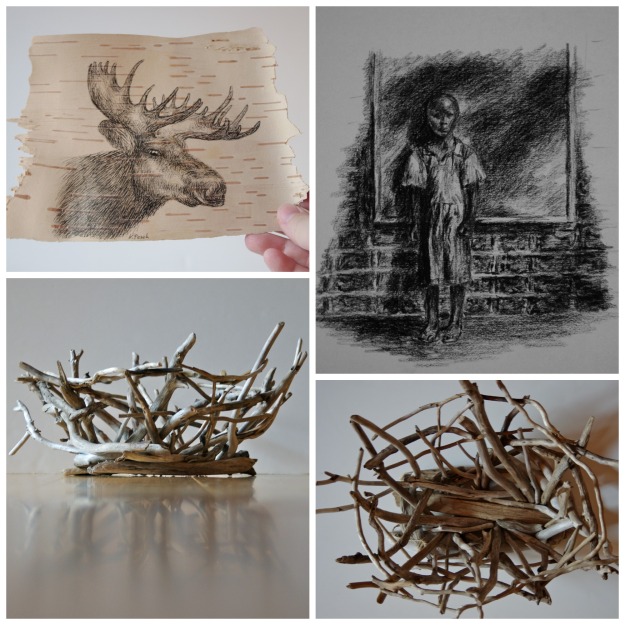Whether you write, paint, draw etc. – eventually you will encounter the dreaded Artist’s Block. It may last for a few days, or much, much longer if you’re particularly unlucky (my record was about 3 months). It is not easy – it mooches your energy, creativity, and, sometimes, your sanity.
So how do you get past it? 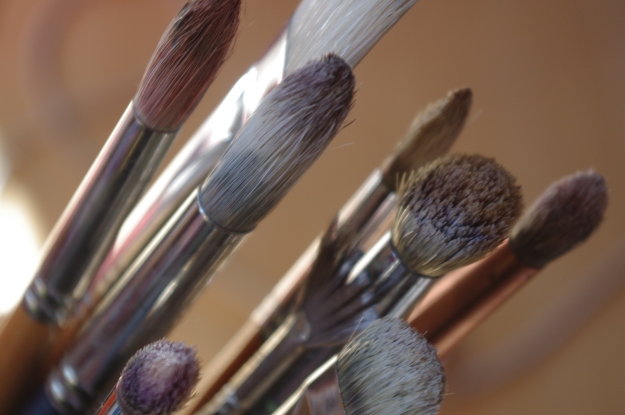
Here are five techniques that I regularly rely on..some were collected through trial and error, and others from sage former instructors: (these are more painting focused, but they could be applied to other mediums)
1. Look at other artwork. Your nearest local gallery, BOOOOOOOM Online, American Art Review magazine, ‘Inside The Studio’ posts at Saatchi Online, Pinterest or websites of galleries in your province, are good places to start. Just looking at other works can be enough inspiration to get the itch to paint. When I lived in Ottawa, I used to take regular purpose-less strolls through the National Gallery, for hours at a time (or until the pain in my feet became too excruciating…I had this insane habit of not wanting to miss out on a potentially life-altering artwork that would help make sense of the world, so I tried to see it all at once, every single time).
Living in a rural setting makes it a little more challenging to get that art gallery fix, which is where the internet comes in handy – while it’s not the same as seeing artwork in person, it does have its own benefits – like viewing art while sipping hot beverages, in your smock and woollen socks.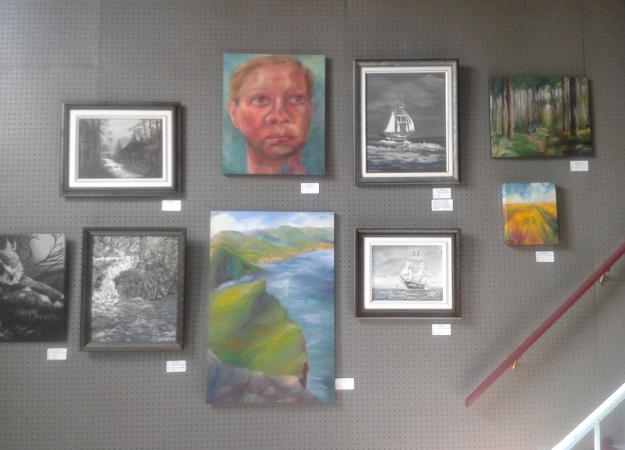
2. If you’re struggling to find a subject, or having difficulties choosing and mixing the right colors, paint a self-portrait. Set up a mirror beside your easel, and paint what you see. Painting from life is a great practice in observation: you have to pay attention to subtle changes in hue and light, while dealing with a moving (though patient) subject. Try to get the colors as accurate as you can – the shapes, while crucial in making the portrait look like you, are not as important in this exercise (so don’t worry if the end result doesn’t look exactly like you). By focusing on just the color, instead of the “big picture”, it narrows your attention, allowing you to focus more time on getting as close as possible to the exact color that you see, which usually means trying out new color combinations. And these new combinations can be applied to other paintings, helping you get out of color ruts.
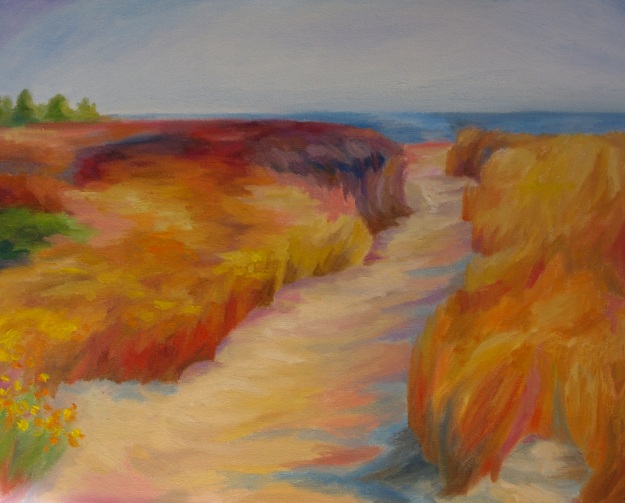
This is not a self-portrait..to be honest, I painted over most of mine, so here’s a recent painting instead, entitled “Summer’s Beckoning”.
3. Begin your next project by declaring “I’m going to make a terrible painting”, and say it with a smile. It may seem ridiculous, but allowing yourself to make one giant mistake of a painting, frees you from the constraints of having to get it right every time. A lot of creative blocks stem from fear, especially of failure. So let yourself fail on purpose – to play, to innovate, to take a risk. No one has to see this painting, it’s intended for the back closet, and the paint-over pile (though you may be pleasantly surprised what you come up with!).

Both paintings that began from using this technique…(R) one of the more successful outcomes I’ve had, while (L) was among the worst (and was eventually painted over).
4. Try a new medium – if you usually paint in oils, try acrylic or charcoal, or something completely different like writing a poem, taking photographs, or making a sculpture out of driftwood. I’m not saying you have to master a whole new skill set, but making time for other (creative) hobbies helps keep you curious and excited. Personally, I switch back and forth between all of them (except acrylic paint…we just don’t get along).
5. If you’re stuck for inspiration, or want to improve your skills but not sure how, try copying a painting from an old master (like a Rembrandt, Degas or Delacroix). Many great painters learned to paint by imitation – it really enhances your ability to observe and mix colors, and you may even discover new techniques of applying paint. This is actually how I learned to mix skin color, by attempting Eugene Delacroix’s Orphan Girl At the Cemetery (see below). To say my version comes anywhere close to the original is an exaggeration, though maybe if you squint your eyes you can see the resemblance.
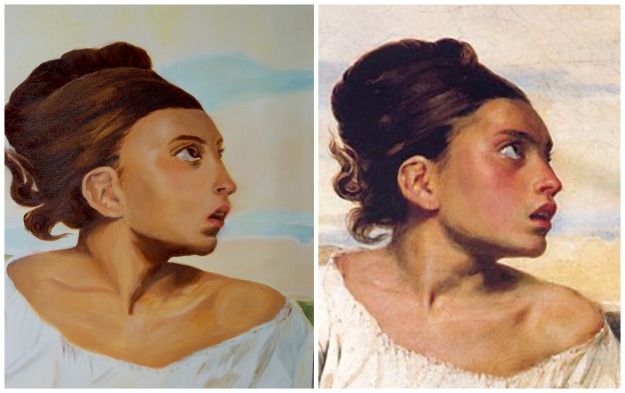
(on the left is my version) It took me 10-12 hours just to get the skin color to stop looking orangey-red, by which time, the proportions were all wrong. But I didn’t want to risk ruining the skin color again, so I just left it. Not great advice, I admit. Though, later on, as my skill improved, I learned that you can always get a painting back to the way it was, so don’t fear messing it up…which is far better advice.

